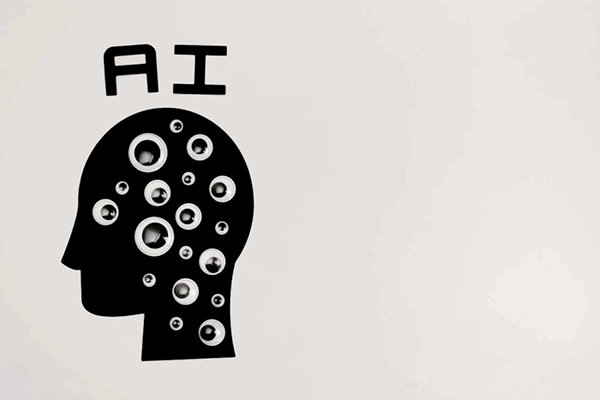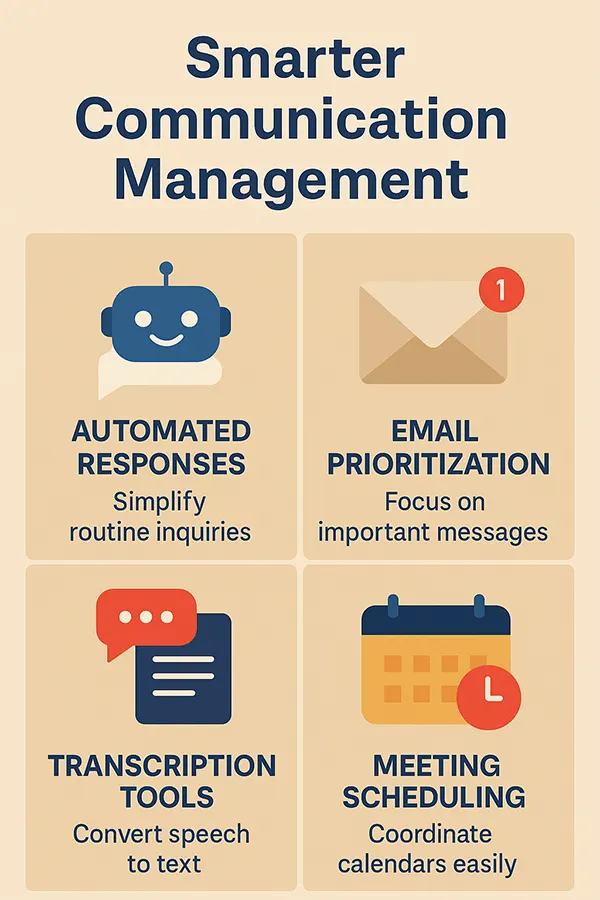
One of the more unexpected areas of progress is in healthcare, specifically dental practices. Tools designed around dental AI are now handling routine front-desk responsibilities, giving staff more time to focus on patients.
This shift highlights something larger: the way AI, when applied thoughtfully, can simplify repetitive office workflows across many industries. During the 2025–2034 forecast period, the global AI in dentistry market is expected to grow at a 22.3% compound annual growth rate (CAGR) from its 2024 valuation of USD 421.0 million to USD 3,117.6 million.
Artificial intelligence is no longer a futuristic concept, reserved for research labs or high-tech firms. Instead, it is here in our everyday lives, often operating quietly in the background of the tools and apps we already use, from scheduling meetings to sorting through messages.
Let’s read more!
KEY TAKEAWAYS
- Learn why office workflows are ripe for change.
- AI helps in scheduling, verification, and other procedures.
- See what could be taken more from it.
Most office jobs involve more than just the substantive work itself. There’s a constant flow of admin tasks, from sending mail reminders to checking calendars. These jobs are small on their own but can add up quickly. They can drain time and attention, pulling people away from anything that really matters.
AI fits neatly into this picture, simply because it thrives on patterns. If something often happens and follows a set of steps, there’s a solid chance AI can take over. That might mean setting up meetings, filtering emails, or confirming details with clients. The eventual outcome is smoother operations and fewer mistakes.
Scheduling is one of the most clear-cut examples of how AI is transforming workflows. Rather than endless back-and-forth emails, AI assistants can scan calendars and propose meeting schedules that work for everyone. They can even handle time zone differences, which often trip people up.
For businesses, this reduces the probability of double bookings and saves hours of backtracking. For employees, it clears mental boundaries so they can concentrate on preparing for the meeting far more than arranging it.

Managing communication is yet another area where AI shines. Inbox overload is a shared struggle. AI filters can now sort messages by flagging urgent items, importance, and even drafting quick replies. In offices where customer service is key, AI-based chat systems answer simple questions without delay, freeing humans for more complex interactions.
This kind of support doesn’t bring people back. Instead, it adds a safety net. It ensures messages don’t get lost and clients are provided timely responses, even outside business hours.
Few tasks are more repetitive than incorporating information into databases or verifying details. AI systems are continually taught to check forms against spot errors, existing records, and autofill missing data. This significantly decreases the risk of costly mistakes and speeds up processes.
In healthcare settings, this is exceptionally helpful. Updating medical notes, verifying patient insurance, or logging appointment details are all jobs where accuracy is critical. AI takes on the vibration work so that staff can focus on human connection.
The rise of AI in dental treatment centers is a reminder that automation isn’t just for tech companies. Offices everywhere can reap advantages from tools that trim away routine tasks. A few fundamental takeaways apply across the board:
These steps make it easier for teams to adopt different workflows without disrupting what already works.
One concern with AI is that it could strip entirely the personal touch. But the opposite often happens. Simply by removing the burden of repetitive tasks, staff have more energy to connect with patients, clients, or coworkers. That means quicker responses, friendlier conversations, and better service overall.
Think of AI as an invisible team member who generally tires of doing the boring parts. It isn’t brightly colored. It just quietly makes the day run more smoothly.
You don’t necessarily need to buy custom software to experience these benefits. Many tools people use daily typically have AI built in. For example:
These features may not feel dramatic, but put together, they reduce friction across the workday.
AI is still evolving, and new opportunities appear regularly. Offices that stay curious about these tools often find seemingly minor changes that lead to big improvements. The true power of AI is in saving time and allowing people to focus on strategic or creative tasks by clearing out inbox clutter and scheduling appointments.
Even in industries like dentistry, which was once considered far removed from technology, AI is proving its value. That’s a lesson any workplace can take to heart: when the key issues are handled, people have room to do their best work.

AI doesn’t require anyone to be loud or futuristic to make an impact. Its real strength is in the delicate ways it keeps workflows moving, from scheduling to verification to communication. Offices that lean into these tools are accomplishing more than just efficiency gains. They’re reducing stress, reclaiming time, and creating better experiences for staff and clients alike.
The next time you come across your calendar syncing up on its own or an email draft opening up with the right words, remember: that’s AI, quietly transforming how work gets done.
These tools can help in scheduling appointments, initiating smarter communications, and even enhancing diagnosis.
Not really. There are no direct risks associated with AI incorporation.
Yes. This training builds a strong basis to effectively utilize AI.
No. Nothing can replace a human touch, especially in dentistry department.
